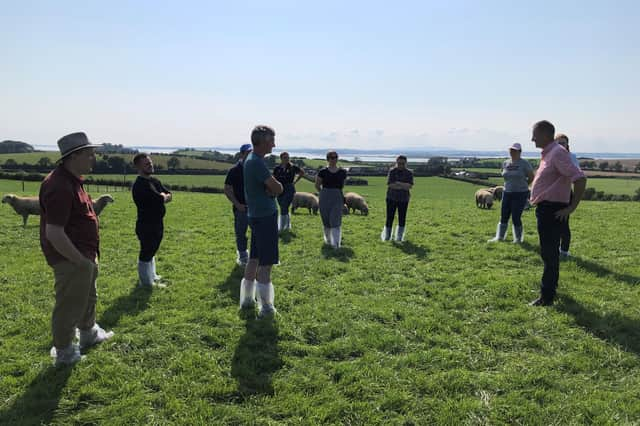Significant progress in first year of project


Alongside AgriSearch the EIP project group is comprised of three beef farmers, two dairy farmers, two sheep farmers with technical input from Queen’s University, AFBI and AHWNI.
It is one of seven EIP projects in Northern Ireland and is jointly funded by the European Agricultural Fund for Rural Development (EAFRD) and the Department of Agriculture, Environmental and Rural Affairs (DAERA).
Advertisement
Advertisement
Anthelmintic Resistance (AR) is becoming widespread throughout the ruminant industries and targeted selective treatment offers the potential to reduce the use of anthelmintics on farm, and in turn reduce the instance of AR. Whilst TST has been found to be successful during research trials, uptake on commercial farms remains limited.
To enable each of the projects participant farms to implement TST practices first each farm undertook a survey of usual anthelmintics practices after which a range of options for Targeted and Targeted Selected Treatment were drawn up by experts at Queen’s University. Implementing these plans was made possible by the investment in weighing equipment as well as the provision of a FECPAKG2 kits. This allowed for regular monitoring of animal performance (e.g. liveweight gain) and on-farm faecal egg count (FEC) testing - key indicators for parasite presence/absence.
Results from the first year are promising with the majority of farms able to reduce the number of anthelmintic treatments undertaken compared to a usual year. By using indicators decisions can be made on when to treat and when to hold off. As well as when to treat, what to treat can also be confirmed by undertaking the faecal egg count testing. The farms also found that ensuring that the correct dose is used and the correct amount is used (based on animal live weight) can also go a long way in reducing total anthelmintic use on farm and ultimately minimising the risk of AR.
The first year of the project involved a steep learning curve for many of the farms involved and support from Queen’s University and the wider EIP operational group has been vital to its success. Learning to trust the FECPAK results and decide when to treat have been the main challenges as has been the extra time required to gather the necessary indicator information. Implementation so far has therefore mainly been at the Targeted Treatment level as opposed to Targeted Selective Treatment. The second year of the project will focus on expanding the use of TT/TST with all farms participating motivated to build on what they have learnt so far.
Advertisement
Advertisement
AgriSearch General Manager, Jason Rankin said: “This project wouldn’t be possible without the effort and commitment of the farmers taking part. It has been extremely interesting to see how each farm has implemented the technique and the impact it has had. It is clear that reductions in anthelmintic use (even if small) can be achieved in a relatively short amount of time. Whilst possible it is often challenging and so the project will continue to explore the feasibility of widespread TT/TST adoption.”
For those interested in finding out more about Anthelmintic TT/TST and the results of the on farm activity a webinar is scheduled for 7th February 2022 at 8pm. To register for the event visit the AgriSearch website.